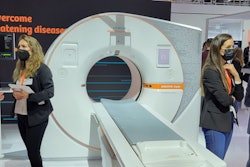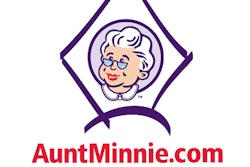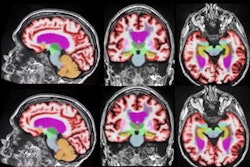
As with everything else in 2020, this year's winners of the Minnies awards have been inextricably shaped by the COVID-19 pandemic. From the Most Significant News Event in Radiology to the winner of the Best Radiology Image, multiple Minnies categories reflect the impact of the pandemic on radiology.
On the positive side, this year's Minnies also saw a plethora of female candidates win in their respective categories, from Most Influential Radiology Researcher to Most Effective Radiology Administrator/Manager. The accolades perhaps reflect the dawning gratitude for the contributions that women make to the field of medical imaging every day -- contributions that perhaps have been underappreciated in the past.
Below is a list of this year's Minnies winners, who triumphed over a field of more than 200 semifinal candidates in 15 categories, based on nominations submitted by members of AuntMinnie.com. You can also view a full list of semifinalists, as well as our comprehensive list of all the Minnies winners over the past 20 years.
Most Influential Radiology Researcher
Minnies 2020 winner: Elizabeth Krupinski, PhD, Emory University
 Elizabeth Krupinski, PhD.
Elizabeth Krupinski, PhD.When Elizabeth Krupinski, PhD, began studying experimental psychology, her initial focus was on the perception of art: Namely, why do different people have such different reactions to art and such different opinions on artistic quality?
But upon completing a master's degree in the area, she was soon told by an adviser that if she wanted to continue in the field, most of her career choices would involve teaching nine months out of the year. That didn't sit well with Krupinski, who had a fascination with research and discovering the unexplored questions of human perception and cognition.
The art world's loss became radiology's gain, as Krupinski subsequently accepted a position as a research assistant at the University of Pennsylvania under Calvin Nodine, PhD, and Dr. Harold Kundel, who together performed pioneering research on medical image perception and how radiologists work. Krupinski spent five years with Nodine and Kundel, and she moved with them from Pennsylvania to Temple University, where she earned her doctorate in experimental psychology in 1990.
Shortly thereafter, Krupinski accepted a faculty position at the University of Arizona, where she spent the next 23 years focusing on the factors that influence the perception and cognition of radiologists, in particular those that can cause errors in interpretation. She said one of her first epiphanies was that radiologists -- like all humans -- are indeed fallible.
"It fascinated me from the beginning ... the realization that radiologists made mistakes," she said. "I knew x-rays were important, but I was under the misconception that doctors were always right."
Krupinski's tenure at the University of Arizona began just as radiology was making the transition from analog film to digital operation (the DICOM 3.0 standard was ratified in 1993, creating a common file format for medical images and serving as the foundation for PACS). Soon, radiology experienced an explosion of digital technologies, from PACS to digital displays to computer-aided detection (CAD) -- and Krupinski studied the impact of many of them on the work of radiologists.
"I was there at the right place at the right time," she told AuntMinnie.com.
The work that Krupinksi and others performed eventually affected patient care by forming the basis for practice guidelines on issues like digital mammography interpretation and digital display use that were issued by groups like the American College of Radiology (ACR), the Society for Imaging Informatics in Medicine (SIIM), and the American Association of Physicists in Medicine (AAPM), starting in the late 1990s and through to 2015/2016. The guidelines cover everything from how often to calibrate monitors to setting the ambient lighting in reading rooms.
In 2015, Krupinski accepted a position as professor and vice chair for research at Emory University, where she continues her research in medical image perception while also mentoring and working with residents.
A particular focus of hers in the past five years has been the factors that contribute to radiologist fatigue -- a topic that has become particularly relevant with physician burnout at epidemic levels. Her work over the past 12 years indicates that fatigue has affected radiologist accuracy and efficiency; the question is, what interventions are most effective in combating it?
Another major issue that will affect the work of radiologists in the years to come is artificial intelligence (AI). Krupinski believes that the jury is still out on how AI will affect radiologists. What's more, some developments that are touted as benefits of AI -- such as triaging cases by eliminating "normal" exams -- could have unintended consequences.
For example, what does it mean for the nature of image interpretation when radiologists go from seeing one case of pathology in a group of 1,000 exams to one case in 50? If radiologists are interpreting a far higher percentage of challenging cases, it could have unforeseen consequences. And it could change the nature of radiology education as well.
"It changes what the trainees are seeing and learning," Krupinski said. "Our trainees won't be seeing as many normal cases. Does that change what they are learning?"
All of which offers fertile ground for further research.
Runner-up: Dr. Pamela Woodard, Mallinckrodt Institute of Radiology
Most Effective Radiology Educator
Minnies 2020 winner: Dr. Ruth Carlos, Journal of the American College of Radiology
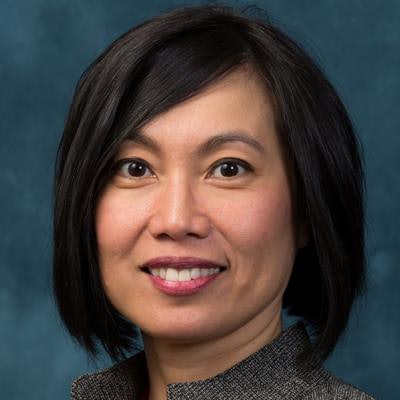 Dr. Ruth Carlos.
Dr. Ruth Carlos.Starting when she was 5 years old, Dr. Ruth Carlos wanted to be a physician. She nearly picked anesthesiology, even though she had a fascination with medical images early on; she was the only medical student bringing films to clinical presentations during her internal medicine rotation.
Her big change in focus came during a two-week rotation in radiology between her third and fourth year of medical school at the University of Chicago. During the rotation, Carlos met neuroradiologist Dr. Ruth Ramsey and chest radiologist Dr. John Fennessy, and together they completely changed her career trajectory. They inspired in Carlos a love of the "whodunnit" nature of diagnostic radiology, a problem-solving search for truth.
On completion of her radiology residency at the University of Chicago, Carlos accepted a fellowship at the University of Michigan, with the idea of spending one year at the university and then moving into private practice. That was 22 years ago; she is now a professor of radiology at the university.
Along the way, Carlos has served in numerous leadership roles, such as president of the Association of University Radiologists in 2012 and president of the American Roentgen Ray Association from 2019-2020. But her career made a major leap with her appointment as editor in chief of the Journal of the American College of Radiology in 2019, replacing Dr. Bruce Hillman, the journal's founding editor, who was retiring.
Carlos considers Hillman a mentor, as he offered her a seat on the journal's editorial board not long after its founding, and she has served as an author, reviewer, and member of the editorial board for the past 10 years. Carlos managed the journal's first special issue, on comparative effectiveness and evidence-based medicine, and she also managed JACR's activities in digital media.
She pointed out that JACR was one of the first radiology journals to focus on health equity as a major issue. Health equity was at first considered a problem outside of radiology, but Carlos noted that medical imaging -- with its emphasis on advanced technology -- is often one of the first places where disparities in access to medical technology are felt. For example, new medical imaging modalities are often implemented first at premier academic institutions, which tend to have wealthier patient populations.
"We have different technology access that limits our ability to deliver good care, deliver good education," Carlos told AuntMinnie.com. "Innovation is great, but we may be contributing to financial burden."
That leads to another relatively new concept that Carlos has been focusing on: the consideration of the "financial toxicity" of medical interventions -- namely, the impact that a medical procedure will have on the patient's financial health, such as through the payment of out-of-pocket expenses for cancer treatment.
Financial toxicity can be just as important as other side effects of health interventions. For example, a woman without healthcare coverage might skip a screening mammogram because she can't afford the workup in case of a suspicious finding. Fortunately, radiology can help identify these cases.
"We need to look at financial toxicity as an adverse event of care, and think about how radiology can screen patients for financial toxicity and develop a referral process into internal institutional support services, or for institutions that don't have internal support, to external resources," she said.
Although her Minnies win this year was for Most Effective Radiology Educator, Carlos maintains a passion for research. And while her duties at JACR don't give her as much time to perform primary research as she used to, as editor in chief she gets a front-row seat at what everyone else is doing.
"The best part of doing research is that for a brief period, you know something before anyone else does," Carlos said. "When you are an editor, you get to read it before anyone else, and it is the next best thing to doing the research yourself. It's the funnest job I've ever had."
Runner-up: Dr. Amy Patel, University of Missouri-Kansas City
Most Effective Radiologic Sciences Educator
Minnies 2020 winner: Dawn Moore, Emory University
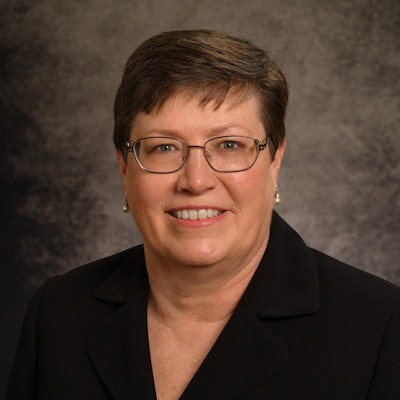 Dawn Moore.
Dawn Moore.It was a helpful college counselor who got Dawn Moore, the winner of this year's award for Most Effective Radiologic Sciences Educator, interested in a career in radiologic technology.
"When I graduated from high school, I didn't have any idea of what I wanted to do," she said. "I went to the college counselor's office and she gave me an 'interest inventory' test, which came back showing that I liked math, science, and people -- and a list of careers I might enjoy. I came across radiologic technology, found the Emory program, and got started."
Moore earned an associate degree in radiologic technology, a bachelor's degree in radiography education, and a master's of medical science in medical physics, all at Emory. She worked as a staff technologist while she was in undergrad; by the time she finished that degree, she was offered a full-time faculty teaching position at Emory -- and she's never looked back.
Over her 34-year career at Emory, Moore has taught more than 20 different courses for the university's Bachelor of Medical Science program in medical imaging. She has also served the university as a clinical coordinator and associate director for radiologic technology programs and as director of the medical imaging program.
Moore has been recognized for her teaching skill many times, receiving the American Society of Radiologic Technologists (ASRT) Leadership Academy for Educators award in 2006, the Atlanta Society of Radiologic Technologist's Terry McDowell Memorial Lecturer award in 2008, and Emory's School of Medicine Dean's Teaching Award in 2019.
One of the most important things for Moore as an educator is to remember how it feels to be a student.
"When you're a student, you're unsure of yourself, but you want to be treated with respect," she said. "We need to guide students along the path to competency -- you can't just throw them out there and expect them to perform perfectly. And failure is part of learning. We've all had to repeat studies for whatever reason, and we shouldn't beat ourselves up for that. You can learn from every situation, whether it's what to do or what not to do."
Another key lesson from her years at Emory has been to create networks -- locally, statewide, and nationally.
"My mentor when I was an undergrad encouraged me to participate in my field across all levels," Moore said. "Not just in my own clinical facility but across the state and the country -- well, around the world, if possible."
Moore believes strongly that it's crucial to fully participate in one's career life.
"Don't just have a job, have a career," she said. "Participate in your professional organizations, get involved, volunteer for committees, share information from your clinical site. And make sure you're enjoying yourself. If you're not having fun, do something else."
Runner-up: Tobias Gilk, Gilk Radiology Consultants
Most Effective Radiology Administrator/Manager
Minnies 2020 winner: Natasha Beyde, Montefiore Health System
 Natasha Beyde.
Natasha Beyde.This year's winner as Most Effective Radiology Administrator/Manager, Natasha Beyde, grew up steeped in a healthcare environment: Her mother is a registered nurse, and as a child, she spent many an afternoon in the hospital being a candy striper while her mother was working. But it was a car accident Beyde experienced as a teenager that prompted her to seek a career in radiology.
"I had to have a CT scan after the accident, and the technology fascinated me," she said. "I started talking to my mother more about radiology and from then on started to aim for the discipline as a career."
Beyde earned an associate degree in radiology in 1999, a Bachelor of Science degree in healthcare administration in 2007, and a Master of Science and Organizational Leadership degree in 2011, continuing to work as a technologist throughout her schooling.
By the time Beyde completed her master's degree, she was lead mammography technologist at Montefiore Breast Imaging Center in the Bronx; she went on to serve as mammography supervisor for Montefiore Advanced Imaging and chief technologist at Wakefield Hospital before being tapped for her current position, assistant director of clinical imaging at Montefiore's Hutchinson campus -- all while raising four children.
"This tends to be a male-driven field, and I take pride in having persevered," she said.
Beyde has always felt like a leader, and her career has allowed her to express those skills. But her leadership is also collaborative: She serves on a number of committees at Montefiore, including its radiation safety group, its postpandemic COVID-19 task force, and its patient satisfaction team. And one of the best parts of her current position is the ability to share ideas with other managers across disciplines, she said.
"We support one another across different practices, from radiology to urology to oncology," Beyde said. "Leadership roles can be demanding, and my colleagues' support helps me then support my staff, especially in this time of coping with the COVID pandemic."
Beyde sees artificial intelligence (AI) as the next frontier in imaging -- a development that will help both clinicians and patients.
"AI is definitely one of the highlights of radiology right now, and it will help the field continue to be more value-driven and patient-centered," she said. "We can use AI for everything from improving radiologist workflow and decreasing patients' length-of-stay to giving patients more control over the logistics of their care."
What's Beyde's advice to other technologists interested in moving into administration? Go for it.
"I started my career in a large health system, which exposed me to various roles and various types of leaders," she said. "That really helped me figure out my own trajectory. Continue your education, don't let anything stop you from being a leader. Keep learning -- it's a lifelong effort."
Runner-up: Greg Hill, Emory University




